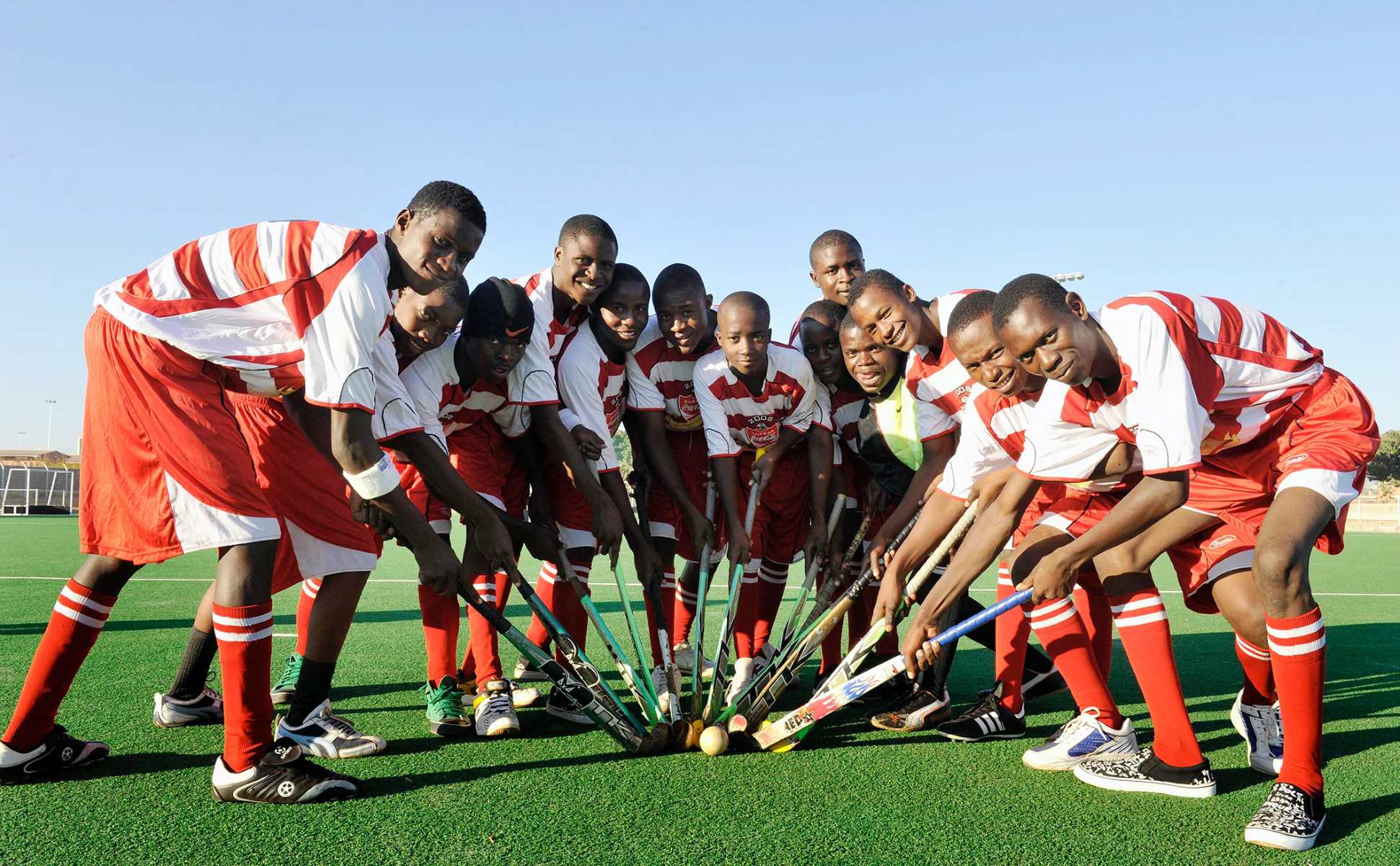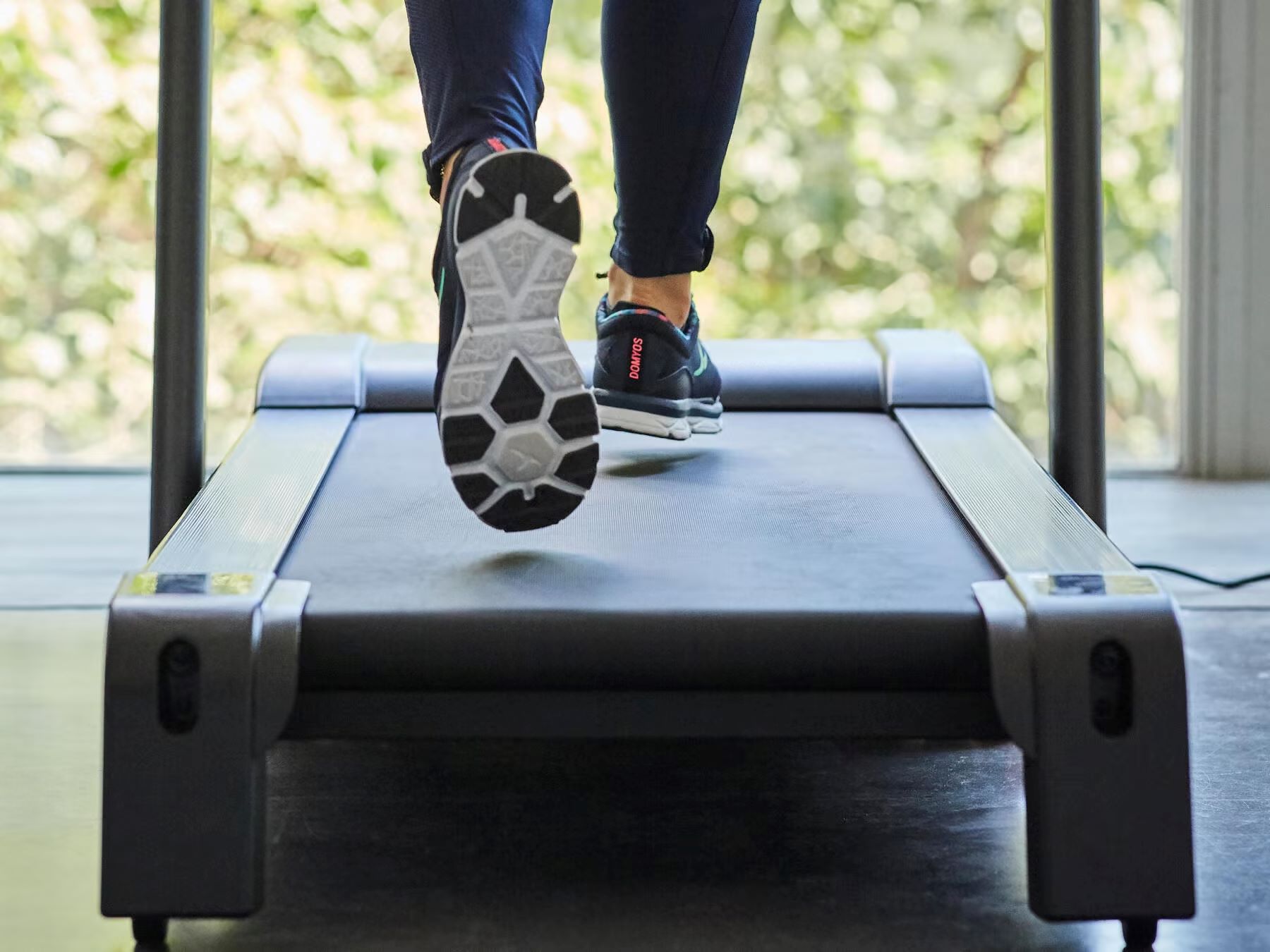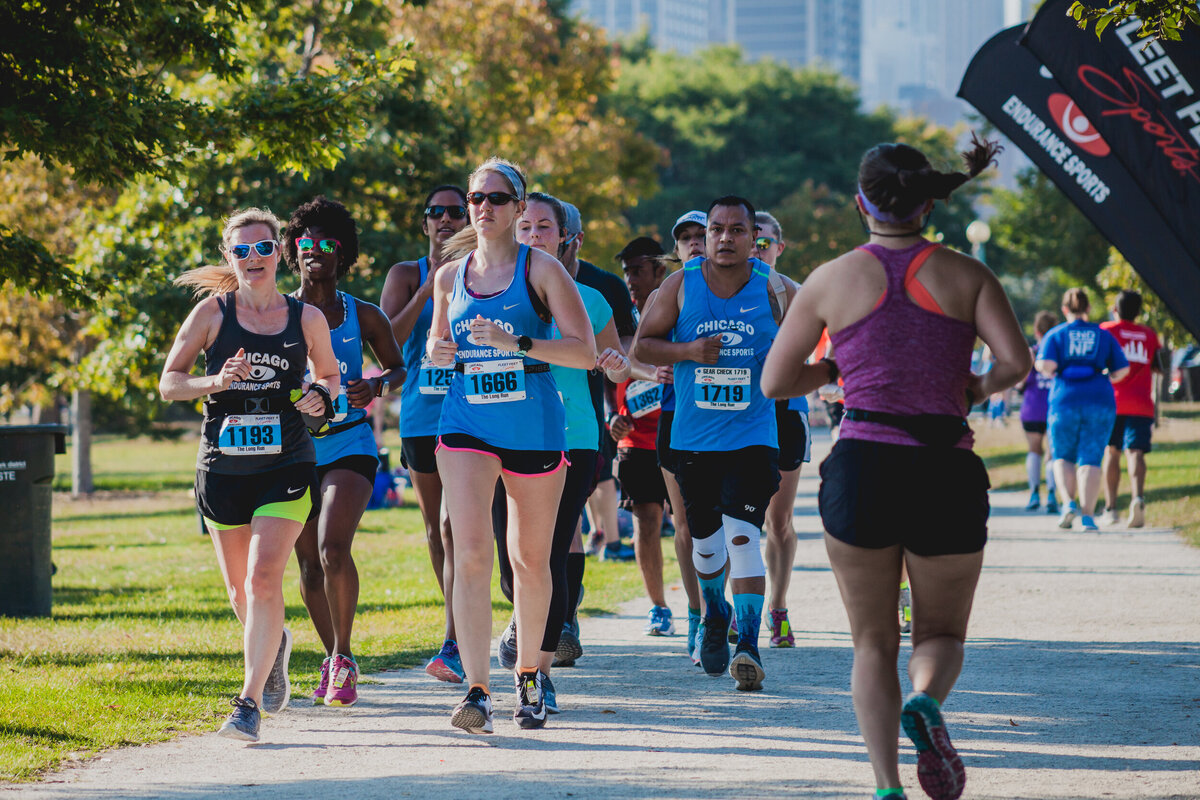

Featured
How To Develop Speed Endurance
Modified: August 21, 2023
Learn how to develop speed endurance with our featured guide. Enhance your athletic performance and increase your stamina with proven techniques and training programs.
Introduction
When it comes to athletic performance, speed endurance is a crucial factor that can make all the difference. Whether you are a sprinter, a soccer player, a basketball player, or any other type of athlete, having the ability to maintain a high speed over an extended period of time can give you a significant advantage on the field or track.
Speed endurance refers to the capacity to sustain a high velocity or intensity for a prolonged duration. It is the ability to maintain a high speed or power output beyond short bursts or sprints. This type of endurance plays a vital role in sports where athletes need to perform at full throttle over an extended period, such as marathons, football matches, or even cycling races.
In this article, we will delve into the concept of speed endurance, its benefits, and how you can develop this essential skill to enhance your athletic performance. So, whether you want to increase your running speed, improve your ability to outpace opponents on the field, or simply boost your overall endurance, read on to learn the key strategies and exercises for developing speed endurance.
Understanding Speed Endurance
Speed endurance goes beyond just being fast. It involves the ability to maintain your maximum speed for a longer period, which is crucial in many sports. Speed endurance is primarily influenced by your body’s energy systems, namely the phosphagen system and the anaerobic glycolytic system.
The phosphagen system provides energy for short bursts of high-intensity activity, such as sprinting, while the anaerobic glycolytic system kicks in to fuel moderate to high-intensity exercises lasting several minutes. These energy systems work in tandem to ensure that your muscles have the necessary fuel and energy to maintain a high speed or power output.
When you’re working on speed endurance, it’s important to focus on improving both the efficiency of your muscles and the capacity of your energy systems. This can be achieved through targeted training that challenges your body to adapt and become more efficient at sustaining high-speed efforts over time.
Another key aspect of understanding speed endurance is recognizing the difference between pure speed and speed endurance. Pure speed refers to how fast you can accelerate and reach your top speed in a short period, such as in a 40-meter sprint. On the other hand, speed endurance assesses your ability to maintain a high speed for a longer duration, like running several laps without experiencing a significant decrease in velocity.
Developing speed endurance requires a combination of factors, including muscular strength and power, cardiovascular fitness, and an understanding of pacing and race tactics. It’s not just about running as fast as you can for as long as possible; it’s about finding the optimal balance between speed and endurance to maximize your performance.
By honing your speed endurance, you can outlast your opponents, maintain a fast pace during a race, or have the energy to make explosive moves in the late stages of a game. So, let’s dive into the various benefits that come with improving your speed endurance.
Benefits of Speed Endurance Training
Speed endurance training offers a multitude of benefits for athletes across different sports and disciplines. By incorporating specific workouts and exercises into your training routine, you can experience significant improvements in your performance. Here are some key benefits of speed endurance training:
- Enhanced Stamina: Improving your speed endurance allows you to maintain a high level of performance for a longer duration. This increased stamina can be beneficial in sports such as soccer, basketball, tennis, and long-distance running, where sustained effort is crucial.
- Increased Speed: By working on your speed endurance, you can boost your overall speed capabilities. This means that you’ll not only be able to reach higher top speeds but also sustain those speeds for longer durations, giving you an advantage over your opponents.
- Improved Anaerobic Capacity: Speed endurance training places demands on your anaerobic energy system, enhancing its capacity for generating energy without the need for oxygen. This translates to improved performance in high-intensity activities that rely heavily on anaerobic metabolism, like sprinting and jumping.
- Enhanced Recovery Ability: Speed endurance training helps improve your body’s ability to recover quickly between high-intensity efforts. This means that you can recuperate faster during a game or race and maintain your performance over multiple rounds or quarters.
- Better Mental Toughness: Pushing your limits in speed endurance training can help you develop mental fortitude and resilience. It teaches you to embrace discomfort, stay focused, and push through fatigue when the going gets tough, ultimately improving your mental toughness during competitions.
- Improved Aerobic Capacity: While speed endurance mainly targets anaerobic energy systems, it also has positive effects on aerobic capacity. As your body adapts to sustained high-intensity efforts, your cardiovascular fitness improves, leading to better overall endurance in both short and long duration activities.
Whether you’re a sprinter looking to shave off seconds from your race time, a football player aiming to outperform opponents on the field, or a cyclist seeking to deliver powerful sprints during a race, incorporating speed endurance training into your routine can have a significant impact on your performance.
In the next section, we will explore the factors that can influence your speed endurance, allowing you to tailor your training plan to address specific areas of improvement.
Factors Affecting Speed Endurance
Speed endurance is influenced by various factors that can impact an athlete’s ability to maintain a high speed over an extended period. Understanding these factors is crucial for designing an effective training plan and addressing specific areas of improvement. Here are some key factors that can affect speed endurance:
- Muscular Strength and Power: Having a strong and powerful musculature is vital for sustaining high-speed efforts. Strong muscles can generate more force, allowing you to maintain a faster pace for a longer duration. Incorporating strength training exercises, such as squats, lunges, and plyometrics, into your routine can help improve your muscular strength and power.
- Aerobic Fitness: Your aerobic fitness level plays a significant role in speed endurance. A well-developed aerobic system helps provide a steady supply of oxygen to your muscles, delaying fatigue and allowing you to maintain a high speed for longer. Regular cardiovascular exercises, like running, cycling, or swimming, can enhance your aerobic fitness and support your speed endurance efforts.
- Running Economy: Running economy refers to how efficiently your body utilizes oxygen while running. Athletes with good running economy consume less energy to sustain a given pace, which is advantageous for speed endurance. Focusing on improving your running form, stride length, and cadence can help enhance your running economy.
- Energy Systems: Your body’s energy systems, specifically the phosphagen and anaerobic glycolytic systems, heavily influence speed endurance. Training targeted towards improving these energy systems can enhance your capacity to generate and sustain the energy required for high-speed efforts. Interval training, tempo runs, and hill repeats are effective ways to improve your energy system capabilities.
- Mental Focus and Pacing: Mental factors, such as focus, concentration, and pacing, significantly impact speed endurance. Maintaining a strong mental focus throughout your training and competition helps you push through discomfort and fatigue. Learning to pace yourself effectively during races or extended efforts is also crucial to ensure that you don’t burn out too soon.
- Recovery Rate: The rate at which you recover between high-intensity efforts directly affects your speed endurance. Faster recovery allows you to maintain a high level of performance for longer durations. Incorporate proper rest and recovery strategies, such as adequate sleep, hydration, and nutrition, to improve your recovery rate.
It’s important to note that these factors are interconnected and should be addressed holistically in your training program. By identifying and targeting the areas that need improvement, you can optimize your speed endurance and enhance your overall performance.
Next, we will explore how to develop a comprehensive training plan for speed endurance.
Developing a Training Plan
Developing a structured training plan is essential for improving your speed endurance effectively. A well-designed plan will incorporate a combination of workouts and exercises that target the key factors influencing your performance. Here are some key steps to consider when developing your speed endurance training plan:
- Set Clear Goals: Determine your specific speed endurance goals. Are you looking to improve your performance in a particular sport or event? Set clear and measurable goals to guide your training plan.
- Assess Your Current Fitness Level: Before diving into intense speed endurance training, assess your current fitness level. This will help you determine the appropriate starting point and monitor your progress over time.
- Incorporate Various Training Methods: To maximize your speed endurance gains, incorporate a mix of training methods. This may include interval training, tempo runs, fartlek workouts, and longer sustained efforts. Varying the types of workouts challenges your body and helps prevent plateaus.
- Progress Gradually: As with any training program, it’s crucial to progress gradually to prevent injuries and allow your body to adapt. Gradually increase the duration, intensity, and volume of your training sessions over time.
- Include Strength Training: Building muscular strength and power is essential for speed endurance. Include strength training exercises that target the major muscle groups involved in your sport. Focus on compound exercises like squats, deadlifts, lunges, and plyometrics to enhance your overall power and explosiveness.
- Balance Hard Workouts with Recovery: Don’t neglect the importance of rest and recovery when developing your training plan. Incorporate rest days into your schedule to allow your body to recover and adapt. Additionally, prioritize proper sleep, nutrition, and hydration to optimize your recovery process.
- Monitor and Adjust: Regularly assess and monitor your progress to determine the effectiveness of your training plan. Keep track of your performance, times, and any changes in your body composition or overall fitness. Adjust your training plan as needed based on your results and feedback.
- Seek Professional Guidance: Consider working with a coach or trainer who specializes in speed endurance training. They can provide expert guidance, design personalized workouts, and ensure you are progressing safely and effectively.
A well-structured training plan tailored to your specific needs and goals is vital for improving speed endurance. Stay consistent, listen to your body, and make necessary adjustments along the way to maximize your performance gains.
In the next sections, we will explore warm-up and stretching techniques, speed endurance exercises, and additional strategies to further enhance your speed endurance.
Warm-Up and Stretching
A proper warm-up and stretching routine is crucial before engaging in speed endurance training. It helps prepare your muscles, joints, and cardiovascular system for the demands of high-intensity exercise, reducing the risk of injury and improving overall performance. Here are some key elements to include in your warm-up and stretching routine:
- Cardiovascular Warm-Up: Start your warm-up with light cardiovascular exercise to gradually increase your heart rate and body temperature. This could include jogging, cycling, or jumping rope for 5-10 minutes.
- Dynamic Stretches: Follow your cardiovascular warm-up with dynamic stretches that target the major muscle groups involved in your speed endurance activities. Dynamic stretches involve controlled movements that mimic the actions you will perform during your workout. Examples include walking lunges, high knees, leg swings, and arm circles.
- Specific Joint Mobility Exercises: Perform exercises that focus on improving the mobility and flexibility of the joints relevant to your sport. This could include ankle circles, hip rotations, shoulder rolls, and wrist stretches. Ensure that you move through a full range of motion to promote joint health and proper movement mechanics.
- Activation Exercises: Include exercises that activate and engage the muscles you will be using during your speed endurance training. This helps ensure that the muscles are firing efficiently and reduces the risk of imbalances. Examples of activation exercises include glute bridges, lateral band walks, and scapular retractions.
- Preparation Drills: Incorporate preparation drills that mimic the specific movements and demands of speed endurance training. This may include skipping, running drills such as A-skips and B-skips, and agility ladder exercises.
- Gradual Build-Up: Gradually increase the intensity and specificity of your warm-up, gradually moving towards the target pace or effort level of your training. This allows your body to adapt and prepares your mind for the upcoming challenge.
- Stretching: After your warm-up, perform static stretches to improve flexibility and prevent muscle tightness. Focus on stretches for the major muscle groups used in your speed endurance training, holding each stretch for 15-30 seconds. Pay particular attention to the hamstrings, quadriceps, calves, and hip flexors.
- Foam Rolling and Self-Massage: Consider incorporating foam rolling or self-massage techniques as part of your warm-up routine. This can help release tension in the muscles, increase blood flow, and improve flexibility.
Remember, warm-up and stretching routines should be individualized based on your sport, specific needs, and any pre-existing conditions or injuries. Consult with a professional to ensure you are performing the appropriate exercises and stretches for your body.
In the next section, we will explore specific speed endurance exercises that can help improve your performance.
Speed Endurance Exercises
Specific speed endurance exercises are essential for improving your ability to sustain a high-speed effort over an extended period. Incorporating these exercises into your training regimen will target the key muscle groups and energy systems involved in speed endurance. Here are some effective speed endurance exercises to consider:
- Interval Training: Interval training involves alternating periods of high-intensity effort with periods of active recovery. For speed endurance, focus on shorter intervals at a near-maximum effort, such as 400-meter repeats or 800-meter repeats. Gradually increase the number of repetitions and decrease the rest durations to challenge your capacity to maintain speed.
- Tempo Runs: Tempo runs involve running at a sustained pace that is slightly below your maximum effort. These are typically longer intervals, ranging from 2 to 5 kilometers, performed at a comfortably hard speed. Tempo runs mimic the sustained efforts required in speed endurance and help improve your ability to maintain a fast pace over an extended distance.
- Hill Sprints: Running uphill challenges your muscles and cardiovascular system, enhancing both power and endurance. Incorporate hill sprints into your training by finding a hill with a moderate incline. Sprint uphill at a near-maximum effort for a short distance, then walk or jog back down for recovery. Repeat the sprints for several intervals.
- Circuit Training: Circuit training involves performing a series of exercises in a consecutive manner with minimal rest in between. Include exercises that target both cardiovascular fitness and muscular strength, such as burpees, jump squats, mountain climbers, and push-ups. This type of training improves overall endurance and the ability to sustain a high effort level for an extended period.
- Fartlek Training: Fartlek, which means “speed play” in Swedish, involves alternating between periods of fast running and periods of slower recovery running. During a run, vary your pace by sprinting for short bursts or picking up the pace for a specified distance, then slowing down to recover. Repeat this pattern throughout your workout to simulate the unpredictable speed changes that occur in speed endurance sports.
- Pyramid Training: Pyramid training involves gradually increasing and then decreasing the intensity or distance of your speed endurance efforts. For example, start with shorter intervals, gradually increase to a peak distance or intensity, then decrease back down. This type of training challenges your ability to maintain pace while providing variation and preventing mental and physical monotony.
- Sport-Specific Drills: In addition to the general speed endurance exercises mentioned above, incorporate drills specific to your sport. These could include sport-specific agility ladder drills for soccer or basketball players, repeated sprint drills for football players, or repetitive cycling intervals for cyclists.
It’s important to note that these exercises should be tailored to your fitness level, sport, and training goals. Gradually increase the intensity and volume of your workouts over time and listen to your body to prevent overtraining and injury.
In the next section, we will explore the benefits of incorporating interval training into your speed endurance routine.
Incorporating Interval Training
Interval training is a highly effective method to improve speed endurance. It involves alternating between high-intensity efforts and periods of active recovery. Incorporating interval training into your speed endurance routine offers numerous benefits and can greatly enhance your performance. Here’s how to effectively incorporate interval training into your training regimen:
- Determine Your Intervals: Select the appropriate interval distance or duration based on your sport and training goals. Shorter intervals, such as 200 meters or 30 seconds, focus on speed and anaerobic capacity, while longer intervals, such as 800 meters or 2 minutes, target both speed and aerobic endurance.
- Define Your Rest Periods: Determine the length of your rest periods between intervals. Active recovery, such as jogging or walking, allows your body to recover while maintaining some level of movement. The duration of your rest periods should be shorter than the work intervals to keep the intensity high.
- Warm-Up Properly: Before starting interval training, ensure you have properly warmed up with a cardiovascular warm-up, dynamic stretches, and mobility exercises. This prepares your body for the high-intensity efforts to come.
- Start Slowly: If you’re new to interval training or have not done it in a while, start with shorter and less intense intervals and gradually progress. This helps your body adapt and prevents overexertion or injury.
- Maintain Proper Form: During your intervals, focus on maintaining proper form and technique. This will ensure optimal muscle recruitment and efficiency, leading to better speed and endurance gains. Pay attention to your posture, arm and leg movements, and stride length.
- Monitor Intensity: Push yourself during the work intervals, aiming for a challenging but sustainable pace. It should be difficult, but not to the point where you can’t maintain the effort for the entire interval. You should be able to finish each interval feeling fatigued but still in control.
- Track Your Progress: Keep a record of your interval training sessions, noting the distances, times, and perceived exertion levels. This allows you to monitor your progress over time and make adjustments as necessary.
- Vary Intensity and Distance: To continually challenge your body and prevent plateaus, vary the intensity and distance of your intervals. This can include increasing the speed, lengthening the intervals, or incorporating pyramid-style interval workouts.
- Rest and Recover: Allow for proper rest and recovery between interval training sessions. This ensures that your body can adapt and rebuild, preventing overtraining and maximizing the benefits of your training.
- Combine with Other Training Methods: Interval training can be combined with other speed endurance exercises, such as tempo runs and hill sprints, for a well-rounded training program. This combination helps improve both your speed and endurance capabilities.
Incorporating interval training into your speed endurance routine is an effective way to challenge your body and improve your performance. Experiment with different interval lengths, rest periods, and intensities to find what works best for you. With regular practice and progression, you’ll notice significant improvements in your speed, endurance, and overall athletic performance.
In the next section, we will discuss important nutrition and hydration tips to support your speed endurance training.
Nutrition and Hydration Tips
Nutrition and hydration play a vital role in supporting your speed endurance training and maximizing your performance. Proper fueling and hydration ensure that your body has the energy and nutrients it needs to perform optimally during high-intensity workouts and competitions. Here are some important nutrition and hydration tips to keep in mind:
- Stay Hydrated: Maintain adequate hydration throughout the day, not just during your training sessions. Drink water regularly to support optimal bodily functions and prevent dehydration, as even mild dehydration can hinder performance. Avoid sugary drinks and alcohol, as they can dehydrate your body.
- Pre-Workout Fuel: Consume a balanced meal or snack containing carbohydrates, protein, and a small amount of healthy fats about 1-2 hours before your speed endurance workouts. Carbohydrates provide the necessary energy, while protein supports muscle building and repair.
- During-Workout Fuel: For longer speed endurance sessions or competitions lasting more than 60-90 minutes, consider consuming easily digestible carbohydrates during your training. This can include sports drinks, gels, or energy bars to sustain your energy levels and delay fatigue.
- Post-Workout Recovery: Refuel your body within 30-60 minutes of completing your speed endurance training. Consume a combination of carbohydrates and protein to replenish glycogen stores and enhance muscle recovery. This could include a post-workout shake, whole food options like lean meats and whole grains, or a mix of both.
- Eat a Balanced Diet: Focus on a well-rounded diet that includes lean proteins, complex carbohydrates, healthy fats, and a variety of fruits and vegetables. This ensures you are getting the necessary nutrients for overall health, energy, and muscle recovery.
- Timing of Meals: Space out your meals and snacks throughout the day to maintain balanced energy levels. Aim for regular, evenly spaced meals and snacks that provide a steady stream of nutrients to support your training and recovery.
- Individualized Approach: Experiment with different foods and eating patterns to find what works best for your body. Every athlete’s nutrition needs are unique, so it’s important to listen to your body and determine what foods and timing work best for you.
- Monitor Fluid Loss: Weigh yourself before and after intense workouts to monitor fluid loss. For every pound lost during exercise, drink approximately 16-24 ounces (500-750 mL) of water to replenish your fluid levels.
- Recovery Meals: Plan well-balanced, nutrient-dense meals to support your recovery after speed endurance training. Include a mix of carbohydrates, protein, and healthy fats to refuel your body and aid in muscle repair.
- Listen to Your Body: Pay attention to your hunger and satiety cues. Everyone’s nutritional needs vary, so honor what your body is telling you. Eat when you’re hungry, drink when you’re thirsty, and make adjustments as needed.
Proper nutrition and hydration play a crucial role in optimizing your speed endurance training. By fueling your body with the right nutrients and staying hydrated, you can enhance your performance, support your recovery, and reach your speed endurance goals.
Next, we will explore the importance of rest and recovery strategies to maximize the benefits of your speed endurance training.
Rest and Recovery Strategies
Rest and recovery are essential components of any training program, including speed endurance. Giving your body adequate time to rest and recover allows for muscle repair, adaptation, and overall improvement in performance. Here are some important rest and recovery strategies to maximize the benefits of your speed endurance training:
- Allow for Sleep: Prioritize quality sleep as it is crucial for recovery and performance. Aim for 7-9 hours of uninterrupted sleep each night to ensure optimal rest and muscle repair.
- Implement Active Recovery: Engage in light, low-impact activities on rest days to promote blood flow, minimize muscle soreness, and aid in recovery. Activities like walking, cycling, or gentle stretching can help facilitate recovery without placing excessive stress on your body.
- Listen to Your Body: Pay attention to how your body feels and adjust your training accordingly. If you experience excessive fatigue, persistent muscle soreness, or signs of overtraining, take a rest day or reduce the intensity of your workouts.
- Use Foam Rolling and Self-Massage: Incorporate foam rolling or self-massage techniques into your routine to release muscle tension, improve flexibility, and promote recovery. Target areas of tightness and soreness to help alleviate muscle knots and increase blood flow.
- Hydrate Properly: Hydration plays a significant role in recovery. Drink enough fluids throughout the day, both during and after your workouts, to replace lost fluids and support muscle function and repair.
- Incorporate Rest Days: Schedule regular rest days into your training plan to provide your body with time to recover and adapt. Rest days allow your muscles and energy systems to rebuild and help prevent overuse injuries and mental burnout.
- Consider Cross-Training: Incorporate other forms of low-impact exercise, such as swimming or cycling, into your training routine. This can provide a break from repetitive motions while still maintaining fitness and promoting recovery.
- Optimize Nutrition: Consume nutrient-dense meals and snacks that support recovery. Prioritize protein for muscle repair, carbohydrates to replenish glycogen stores, and a mix of fruits, vegetables, and healthy fats for overall health and well-being.
- Practice Stress Management: Implement stress management techniques, such as mindfulness meditation, deep breathing exercises, or yoga, to reduce stress levels and promote recovery. High levels of stress can impede recovery and hinder performance.
- Regularly Assess Progress: Track your training progress and performance to monitor improvements and identify areas that may require adjustments. Regular assessment allows you to make informed decisions regarding rest, recovery, and training modifications.
Remember, rest and recovery are just as important as the intense training sessions themselves. By incorporating these strategies into your routine, you can optimize your speed endurance training, prevent injuries, and achieve your performance goals.
In the next section, we will discuss the importance of monitoring and measuring your progress in speed endurance training.
Monitoring and Measuring Progress
Monitoring and measuring your progress in speed endurance training is essential to track your improvements, identify areas of strength and weakness, and make informed adjustments to your training plan. By implementing effective monitoring strategies, you can stay motivated and ensure that you are continuously progressing towards your speed endurance goals. Here are some key methods for monitoring and measuring your progress:
- Keep a Training Log: Maintain a detailed training log where you can record your workouts, including distances, times, and perceived effort levels. This allows you to track your progress over time and identify patterns or trends in your performance.
- Use Timing Devices: Utilize timing devices, such as a stopwatch or GPS watch, to accurately measure your interval times, distances, and pacing. This data can provide valuable insights into your speed and endurance improvements.
- Track Key Performance Indicators (KPIs): Identify specific performance indicators relevant to your sport and speed endurance goals. This could include metrics such as race times, average speed, power output, or heart rate during specific efforts. Regularly measure and compare these KPIs to monitor your progress over time.
- Conduct Regular Fitness Assessments: Incorporate periodic fitness assessments to assess your speed endurance capacity. This can include timed runs, repeat sprint tests, or other assessments specific to your sport. Repeat the same assessments periodically to gauge your improvement and identify areas for further development.
- Track Physical Changes: Monitor changes in body composition, such as muscle mass and body fat percentage, as these can indirectly reflect improvements in speed and endurance. Keep in mind that overall performance gains should be prioritized over aesthetic changes alone.
- Assess Recovery and Resting Heart Rate: Regularly measure your resting heart rate and assess how quickly it returns to normal after intense exercise. Reduced resting heart rate and faster recovery heart rate can indicate improved cardiovascular fitness and improved recovery capacity.
- Listen to Your Body: Pay attention to how you feel during training and competition. Subjective feedback, such as perceived effort levels, fatigue levels, and overall well-being, can provide valuable insights into your progress and recovery.
- Seek Feedback and Evaluation: Engage with coaches, trainers, or experienced athletes to gain feedback and evaluation of your performance. They can provide insights, identify areas for improvement, and offer guidance to enhance your speed endurance training.
- Keep Motivated: Celebrate small milestones and achievements along the way to stay motivated. Setting realistic short-term goals can help you maintain focus and provide a sense of accomplishment, which can further push you to improve.
- Adjust Training Plan as Needed: Based on your monitoring and assessment results, adjust your training plan as necessary to address weaknesses and capitalize on strengths. Regular evaluations ensure that your training plan continues to align with your goals and helps you progress effectively.
By consistently monitoring and measuring your progress, you can gain valuable insights into your speed endurance development. This allows you to make informed decisions, adjust your training plan accordingly, and continue pushing towards your performance goals.
In the next section, we will discuss common mistakes to avoid when training for speed endurance.
Common Mistakes to Avoid
Training for speed endurance requires focus, discipline, and a strategic approach. However, there are common mistakes that athletes can make that can hinder their progress or increase the risk of injury. Being aware of these mistakes can help you avoid them and continue progressing towards your speed endurance goals. Here are some common mistakes to avoid:
- Skipping Proper Warm-Up and Cool-Down: Neglecting to warm up adequately before speed endurance training can increase the risk of injury. Similarly, skipping the cool-down can impede your body’s recovery process. Always allocate time for a proper warm-up and cool-down to prepare your body for the demands of training and promote optimal recovery.
- Overtraining: Pushing too hard and neglecting rest and recovery can lead to overtraining. Overtraining can result in decreased performance, increased risk of injury, and mental and physical burnout. Avoid overtraining by incorporating rest days into your training plan and listening to your body’s signals of fatigue and overexertion.
- Neglecting Strength Training: Speed endurance is not solely dependent on cardiovascular fitness. Neglecting strength training can limit your potential for speed and endurance improvements. Incorporate regular strength training exercises to develop power, explosiveness, and overall muscular strength, which are crucial for speed endurance performance.
- Not Tailoring Training to Your Sport: Speed endurance training should be specific to your sport or activity. Failing to customize your training program to the specific demands of your sport can lead to suboptimal results. Consider the movements, energy systems, and muscle groups used in your sport and tailor your training plan accordingly.
- Ignoring Technique and Form: Proper form and technique are essential for efficiency, injury prevention, and optimal performance. Neglecting technique and form can result in wasted energy and increased risk of overuse injuries. Focus on maintaining good form during your speed endurance exercises and seek guidance from a coach or trainer if needed.
- Not Monitoring Progress: Failing to monitor and measure your progress can make it difficult to track improvements and make necessary adjustments to your training plan. Keep a training log, use timing devices, and conduct regular assessments to gauge your progress and ensure continuous improvement.
- Poor Nutrition and Hydration: Inadequate fueling and hydration can impair your speed endurance performance. Poor nutrition can decrease energy levels, delay recovery, and hinder overall progress. Ensure that you are fueling your body with a balanced diet and hydrating adequately to support your training and optimize performance.
- Ignoring Recovery Strategies: Recovery is a critical component of speed endurance training. Neglecting proper rest, recovery, and self-care strategies can impede progress and increase the risk of injury. Make sure to prioritize sleep, implement active recovery, and use techniques such as foam rolling and stretching to support your body’s recovery.
- Lack of Consistency: Consistency is key when training for speed endurance. Irregular training or failing to stick to your training plan can hinder progress and make it difficult to develop the necessary endurance and speed. Establish a consistent training routine and stick to it to maximize your results.
- Not Seeking Professional Guidance: Speed endurance training can be complex, and mistakes can be easily made without proper guidance. Working with a coach or trainer who specializes in speed endurance can provide valuable insights, guidance, and help you avoid common pitfalls.
Avoiding these common mistakes can help you optimize your speed endurance training, reduce the risk of injury, and ensure consistent progress towards your performance goals. Stay disciplined, listen to your body, and seek guidance when needed.
In the next section, we will conclude our article on developing speed endurance with a recap of the key points discussed.
Conclusion
Developing speed endurance is crucial for athletes across various sports and disciplines. Whether you’re a sprinter, a soccer player, or a basketball player, the ability to maintain a high speed over an extended period can give you a competitive edge. By implementing the strategies and exercises outlined in this article, you can improve your speed endurance and enhance your athletic performance.
We began by understanding the concept of speed endurance and its importance in sports. We explored the factors that affect speed endurance, such as muscular strength, aerobic fitness, and energy systems. From there, we learned how to develop a comprehensive training plan, which includes warm-up and stretching routines, speed endurance exercises, and the incorporation of interval training.
Nutrition and hydration were highlighted as essential aspects of speed endurance training. Proper fueling and hydration support your body’s energy needs and aid in recovery. Rest and recovery strategies, including adequate sleep, active recovery, and stress management, were emphasized for optimizing performance and preventing overtraining.
Monitoring and measuring progress play a vital role in speed endurance training. By regularly assessing your performance, tracking key indicators, and seeking feedback, you can make informed adjustments to your training plan and stay motivated on your journey towards improving speed endurance.
Finally, we discussed common mistakes to avoid, such as neglecting strength training, overtraining, and failing to customize your training to your specific sport. By avoiding these pitfalls, you can maximize your training efforts and reach your speed endurance goals.
Remember, developing speed endurance takes time, dedication, and patience. Stay consistent, be mindful of your body’s signals, and adapt your training as needed. With determination and smart training strategies, you can enhance your speed, endurance, and overall athletic performance.









